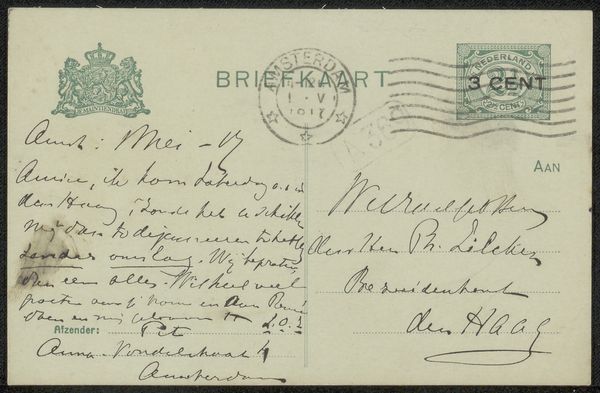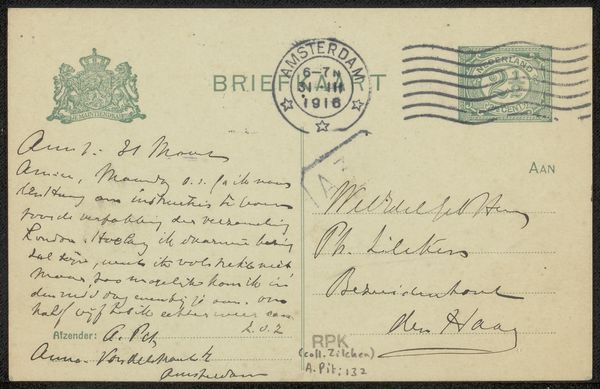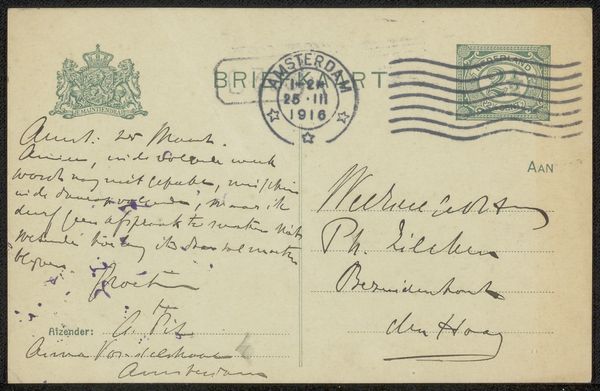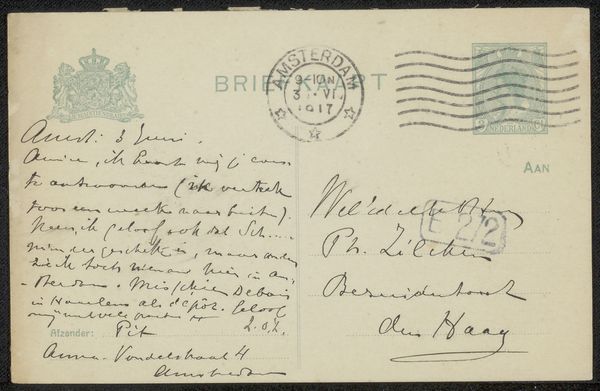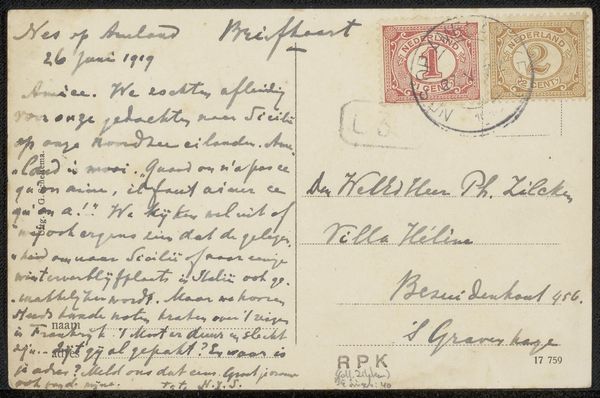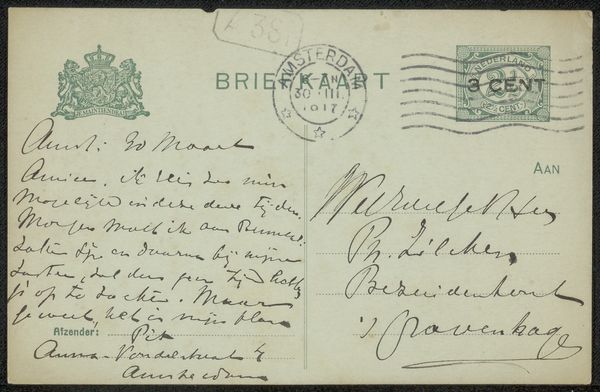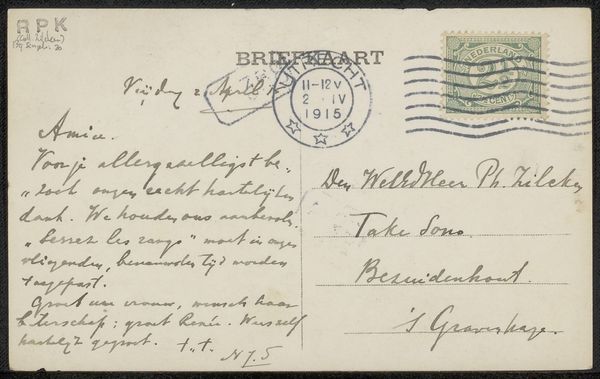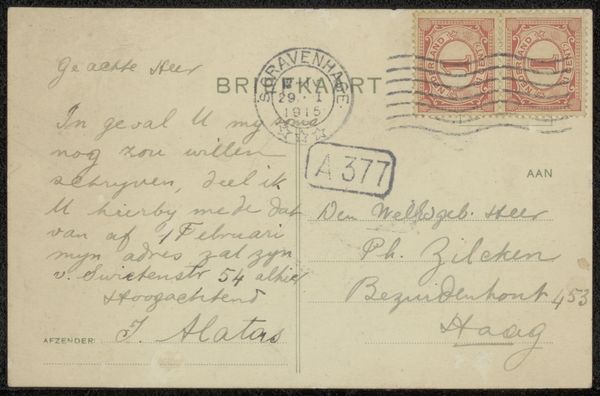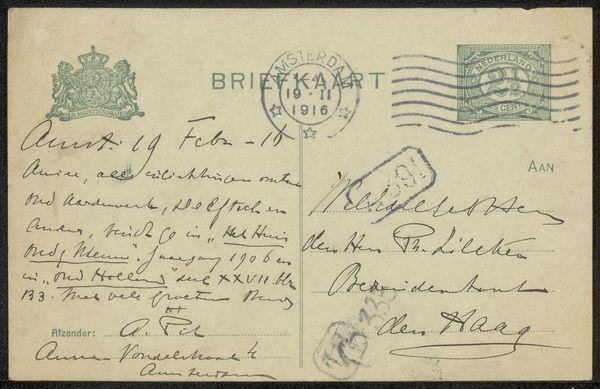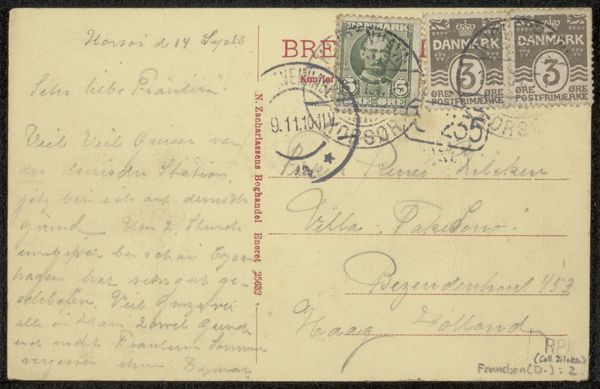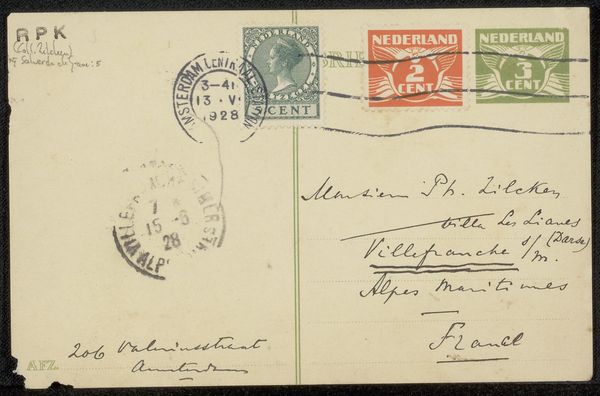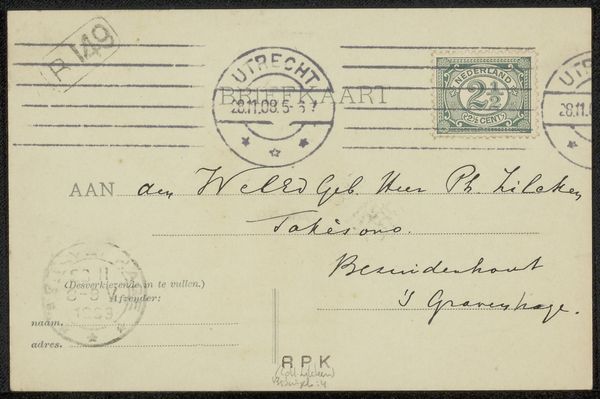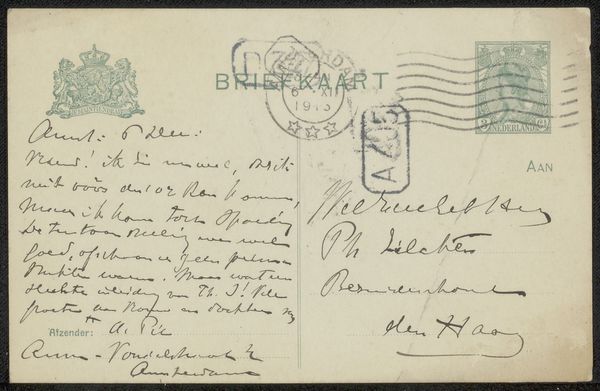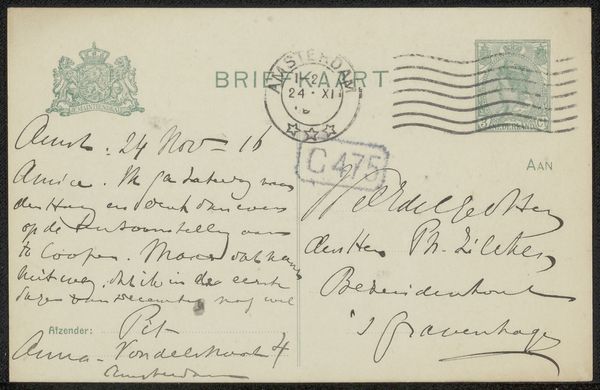
drawing, paper, ink, pen
#
drawing
#
comic strip sketch
#
hand-lettering
#
hand drawn type
#
hand lettering
#
paper
#
personal sketchbook
#
ink
#
hand-drawn typeface
#
pen work
#
sketchbook drawing
#
pen
#
storyboard and sketchbook work
#
sketchbook art
#
modernism
Copyright: Rijks Museum: Open Domain
Curator: We're looking today at "Prentbriefkaart aan Philip Zilcken," a postcard drawing possibly from 1915, created by N.J. Singels. Editor: It feels like a glimpse into someone’s thoughts—all this looping script gives the impression of a hurried but heartfelt missive. Intimate, like eavesdropping. Curator: Indeed. Observe the material quality—ink on paper. The drawing utilizes pen work to achieve a distinctive aesthetic. There is something about the use of script that draws one's eyes and demands analysis of its linework. The careful rendering of hand-lettering elevates this humble medium to an interesting level. Editor: You are right; even the postal stamp takes on another significance. And then I keep imagining the story *behind* it—to whom was this sent and in what circumstances, given that the text has a stream-of-consciousness quality? I find my imagination immediately creating stories based on these shapes. Curator: I appreciate how you intuitively respond to narrative; however, if we regard it as art, let us first consider its compositional elements. Note the dynamic tension of the written script: its dense texture offers more weight to some areas over others which contributes to the balance and formal rhythm. Editor: But don’t you think that very asymmetry contributes to its narrative pull? The hand-lettering almost becomes a character; its shifts in pressure and direction communicate urgency, intimacy, even a touch of wistful longing. I feel as if it could contain secrets—I can't read them, of course, but imagine their power when the work's recipient received this. Curator: A valid perspective. However, from my viewpoint, these emotional interpretations should supplement rather than obscure an objective assessment focused primarily on aesthetic forms and construction. This work embodies certain attributes reminiscent of Modernism which favored subjective expression combined with clear design principles. Editor: True. Yet it makes me wonder about the daily practice—the ordinary rituals through which inspiration flourishes into the tangible and often extraordinary artwork we admire. Thanks for sharing, as always, a refreshing new way of considering an often overlooked aesthetic in modern art practices. Curator: My pleasure; hopefully visitors will view artworks more thoughtfully thanks to this discussion.
Comments
No comments
Be the first to comment and join the conversation on the ultimate creative platform.
